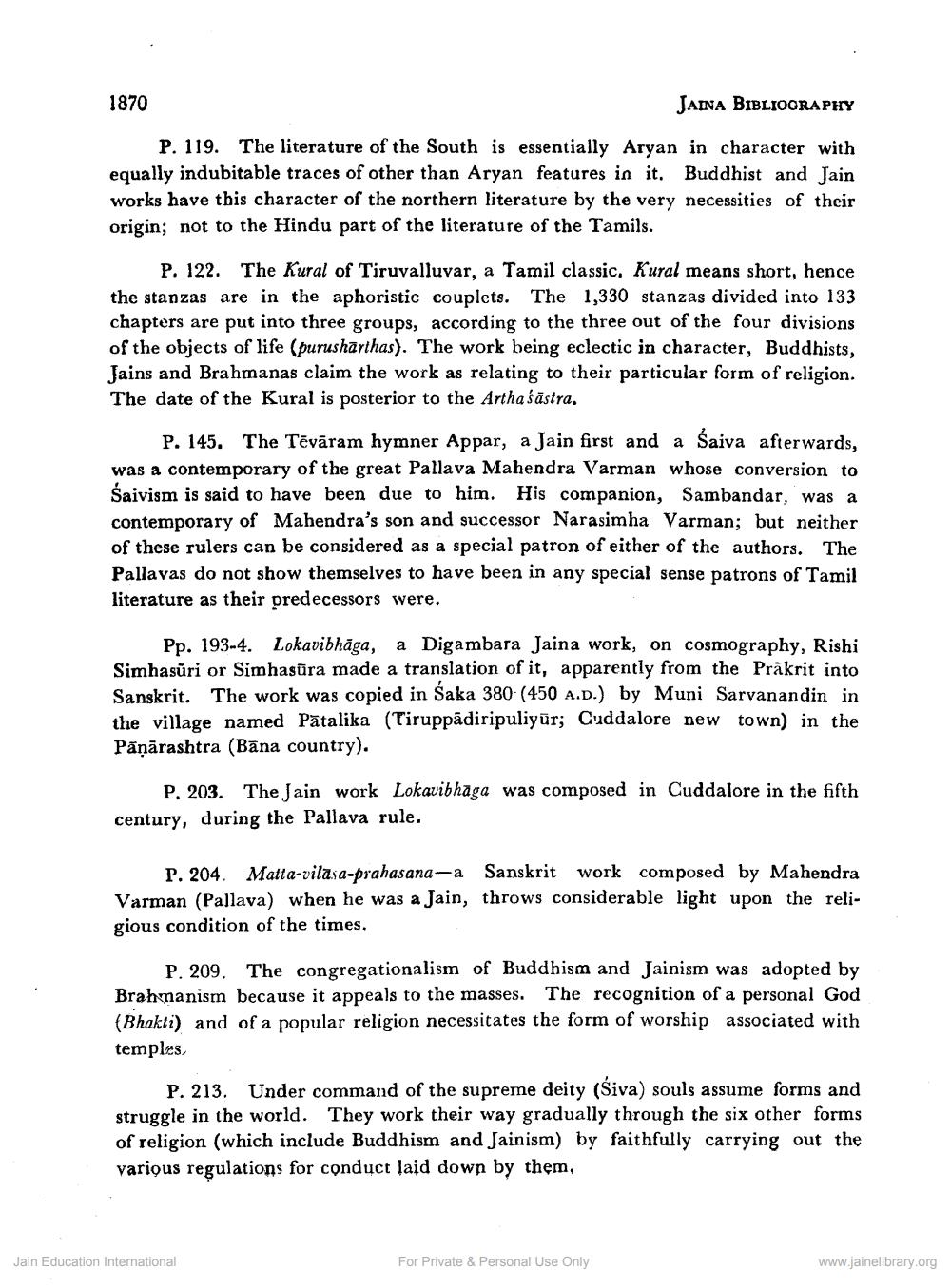________________
1870
JAINA BIBLIOGRAPHY
P. 119. The literature of the South is essentially Aryan in character with equally indubitable traces of other than Aryan features in it. Buddhist and Jain works have this character of the northern literature by the very necessities of their origin; not to the Hindu part of the literature of the Tamils.
P. 122. The Kural of Tiruvalluvar, a Tamil classic, Kural means short, hence the stanzas are in the aphoristic couplets. The 1,330 stanzas divided into 133 chapters are put into three groups, according to the three out of the four divisions of the objects of life (purushārthas). The work being eclectic in character, Buddhists, Jains and Brahmanas claim the work as relating to their particular form of religion. The date of the Kural is posterior to the Artha śāstra,
P. 145. The Tēvāram hymner Appar, a Jain first and a Saiva afterwards, was a contemporary of the great Pallava Mahendra Varman whose conversion to Saivism is said to have been due to him. His companion, Sambandar, was a contemporary of Mahendra's son and successor Narasimha Varman; but neither of these rulers can be considered as a special patron of either of the authors. The Pallavas do not show themselves to have been in any special sense patrons of Tamil literature as their predecessors were.
Pp. 193-4. Lokavibhāga, a Digambara Jaina work, on cosmography, Rishi Simhasūri or Simhagūra made a translation of it, apparently from the Prākrit into Sanskrit. The work was copied in Saka 380 (450 A.D.) by Muni Sarvanandin in the village named Pātalika (Tiruppādiripuliyür; Cuddalore new town) in the Päņārashtra (Bāna country).
P. 203. The Jain work Lokavibhaga was composed in Cuddalore in the fifth century, during the Pallava rule.
P. 204. Matta-vilasa-prahasana-a Sanskrit work composed by Mahendra Varman (Pallava) when he was a Jain, throws considerable light upon the religious condition of the times.
P. 209. The congregationalism of Buddhism and Jainism was adopted by Brahnanism because it appeals to the masses. The recognition of a personal God (Bhakti) and of a popular religion necessitates the form of worship associated with temples
P. 213. Under command of the supreme deity (Siva) souls assume forms and struggle in the world. They work their way gradually through the six other forms of religion (which include Buddhism and Jainism) by faithfully carrying out the various regulations for conduct laid down by them,
Jain Education International
For Private & Personal Use Only
www.jainelibrary.org




